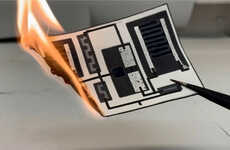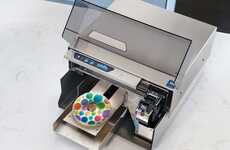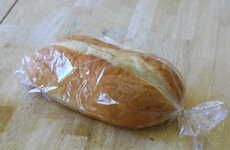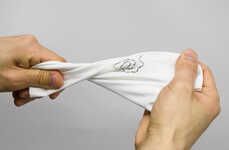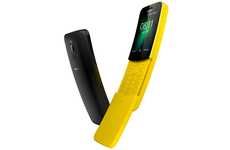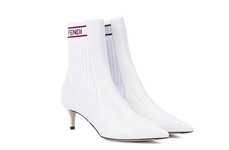Rice University is Printing Edible RFID Tags on Food, Cloth & Cardboard
Laura McQuarrie — February 22, 2018 — Unique
References: news.rice.edu
Researchers from Rice University have created a way for edible RFID tags to be printed on food, cloth, cardboard and paper, introducing what it calls a "new class of edible electronics."
Previously, Rice University unveiled laser-induced graphene (LIG), finding that anything with the right carbon content can be turned into graphene—a thin layer of pure carbon. As chemist James Tour notes: "This is not ink, this is taking the material itself and converting it into graphene."
As part of its experiments, Rice University created LIG patterns on everything from potatoes and coconut shells to cork and toast. In terms of this technology's potential applications, the possibilities are immense when it comes to communicating more information about a product, including its origins or its freshness, without the need for extraneous materials.
Previously, Rice University unveiled laser-induced graphene (LIG), finding that anything with the right carbon content can be turned into graphene—a thin layer of pure carbon. As chemist James Tour notes: "This is not ink, this is taking the material itself and converting it into graphene."
As part of its experiments, Rice University created LIG patterns on everything from potatoes and coconut shells to cork and toast. In terms of this technology's potential applications, the possibilities are immense when it comes to communicating more information about a product, including its origins or its freshness, without the need for extraneous materials.
Trend Themes
1. Edible RFID Tags - Opportunity to create edible RFID tags for various applications, revolutionizing the way information is communicated on products.
2. Extreme Materials - Potential to explore new uses of extreme materials like graphene, opening up possibilities for disruptive innovations in various industries.
3. Printable Electronics - Advancements in printable electronics enable the printing of electronic components on various substrates, offering opportunities for disruptive innovations in multiple sectors.
Industry Implications
1. Food and Beverage - The food and beverage industry can utilize edible RFID tags to provide detailed information about products, enhancing transparency and traceability.
2. Textile and Fashion - The textile and fashion industry could incorporate edible RFID tags to offer interactive and informational experiences to consumers through their clothing and accessories.
3. Packaging and Labeling - The packaging and labeling industry can leverage edible RFID tags to provide real-time data and enhance product authentication and tamper-proofing.
2.9
Score
Popularity
Activity
Freshness

